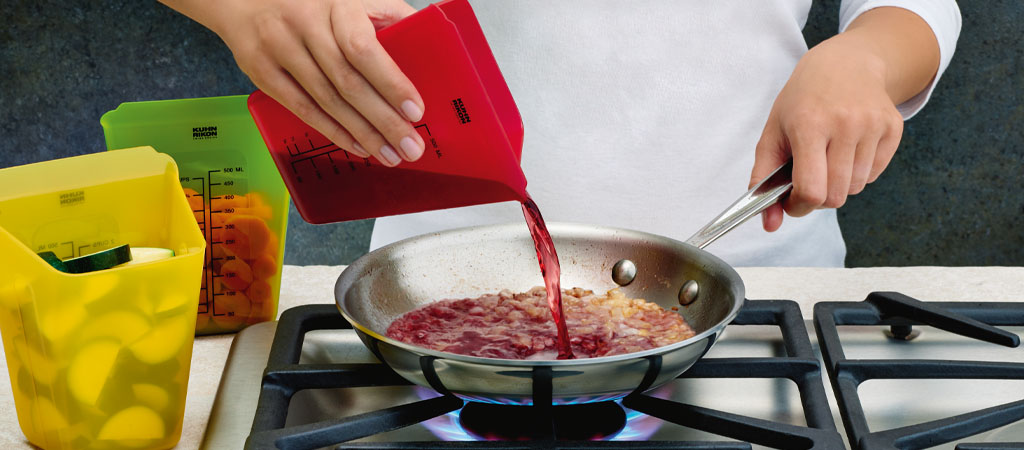Weights and Measures

In Britain we live in a strange bi-lingual world of weights and measures. Different products and features are measured in either imperial or metric or both. We follow the European lead when we’re buying products, from butter to bananas, but we can still buy milk in pint cartons! We buy greaseproof paper and cling film in metres but bakeware is often referred to in inches.
If we get away from the kitchen for a moment, it is strange that we buy petrol or diesel in litres and yet travel miles on the road.
As a cook you’ll encounter different units of measure, especially if you have cookery books that are perhaps over 25 years old. Older British cook books and American recipes will refer to Fahrenheit temperatures for the oven and imperial weights and measures, whereas all recipes produced for the UK now focus on centigrade and metric. Even then, more recent books may have recipes listing the ingredients in metric and then call for an 8 inch tin!
If a recipe lists both metric and imperial the conversions will have been rounded up or down. To be sure you get the right ratio of ingredients it is advisable to follow one unit of measure throughout a recipe, either metric or imperial.
Pints, quarts and gallons are potentially confusing because an American pint is only 16 fluid ounces compared to 20 fluid ounces in a British pint – do be aware of that if you’re following an American recipe that refers to quarts, pints or fractions of pints. A quarter of an American pint, for instance, will be 4 fluid ounces, not 5, as in a British pint.
Measuring cups are another minefield altogether. Did you know that British cups (284 millilitres) are different from American cups (236.5 millilitres) which are also different from Australian cups (250 millilitres)? So, if you need to be precise you’ll want to know where your recipe originates and you need to know whether the cup measures you have are British, American or Australian.
Measuring spoons are actually fairly easy to convert because most measuring spoons, bought in the UK, show teaspoons and tablespoons as well as the millilitre equivalent, so 1 teaspoon converts to 5ml, while 1 tablespoon is 15ml.
As for oven temperatures – if you have an old recipe, or an American recipe, that only lists Fahrenheit oven temperatures then roughly half is the centigrade equivalent, for example – 350°F is 180°C. Don’t forget that if you have a fan oven you should reduce the stated temperature by about 20°C.
So what if you need to convert a unit of measure? When it comes to liquid an adage to remember is – ‘a pint of water is a litre and three quarters’ – but that’s not much help for most conversions.
Fortunately it’s generally easy to find a site on the internet that will do an instant conversion from ounces to grams, litres to pints, or whatever you need to know. But – what if the internet is not within reach? Well, here are some conversion values, generally rounded up or down for ease of use.
Grams & Ounces
225g = 8oz.
500g = 1lb. 2oz.
1 kilo = 2.2lb.
Millilitres & Fluid ounces
150 ml = 5fl.oz.
500ml = 17.5fl.oz.
1L = 35 fl.oz.
Our Mise en Place is a 3 piece measuring set with markers for millitres, litres and American cups.
Want to know more? Here’s a handy chart of conversions on Delia Online. And here’s a link to a flexible online conversion chart – just enter the value and the units you want to convert.
We have made things rather complicated in Britain although we seem to manage in our bi-lingual world of weights and measures. Do be sure to follow one unit of measurement for a recipe, don’t mix your ounces with your grams, or your pints with your litres – that’ll be a British pint, not an American pint – and be aware of which cup sizes you are using – British, American or Australian!

 UK
UK

